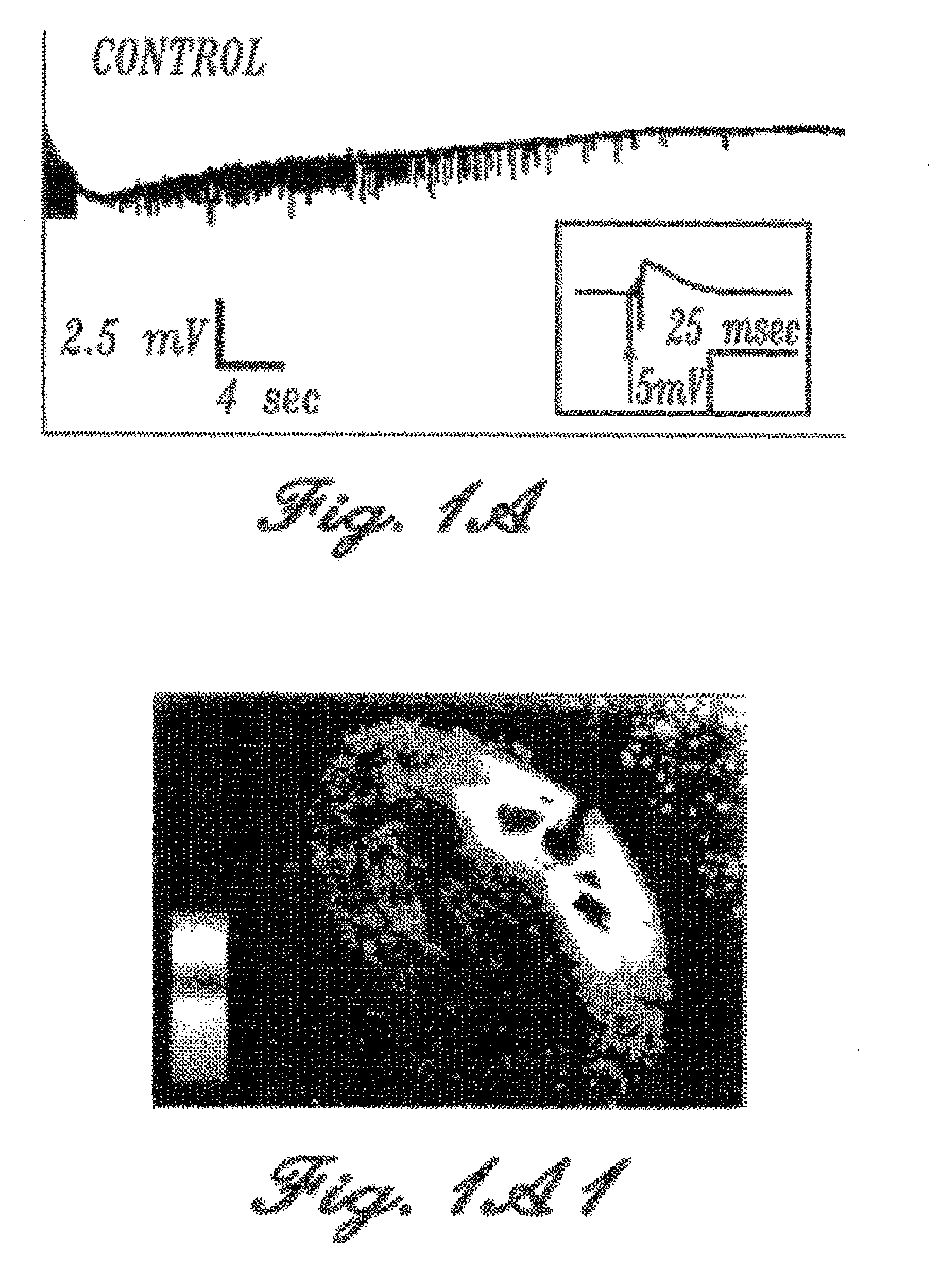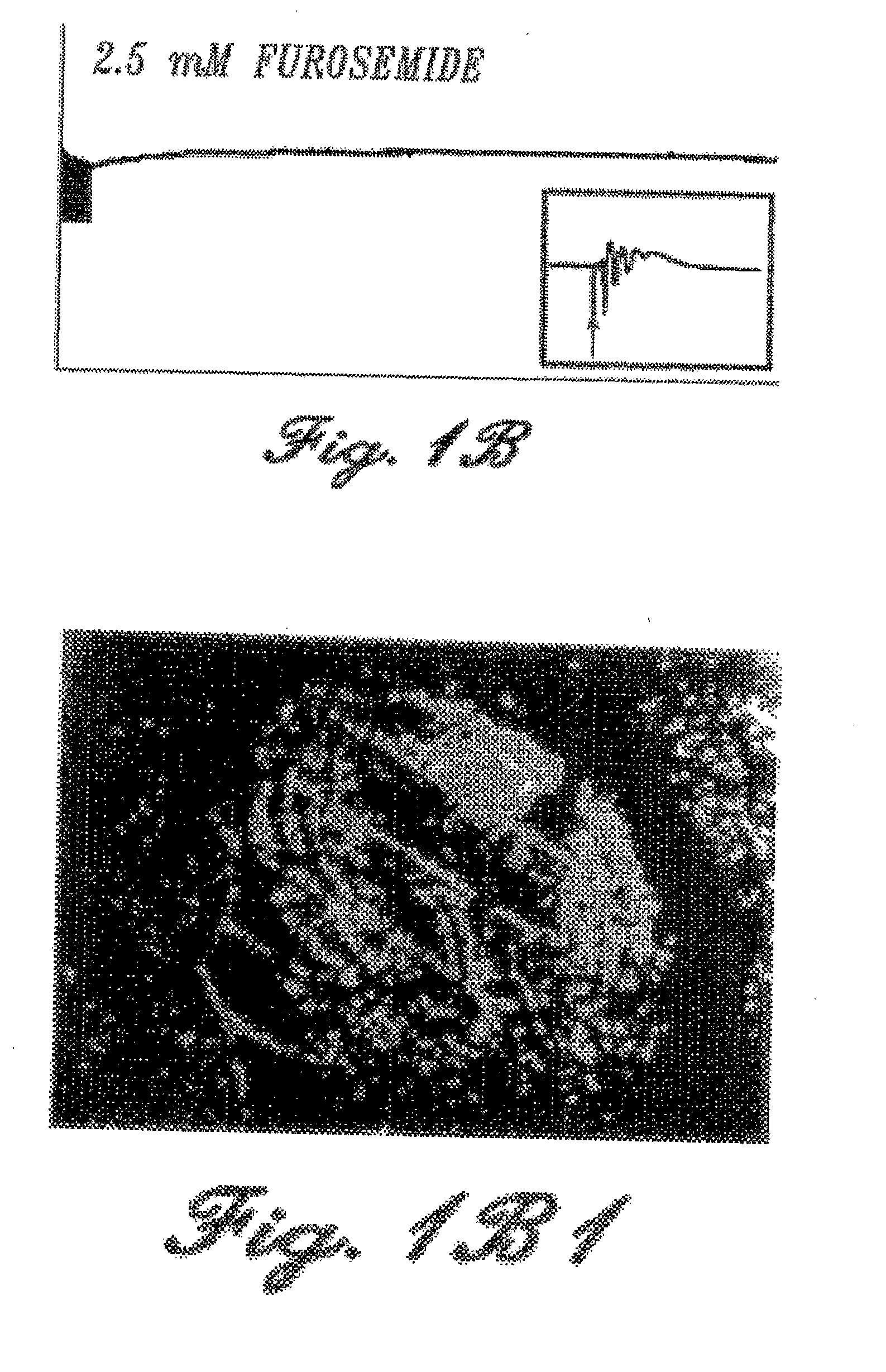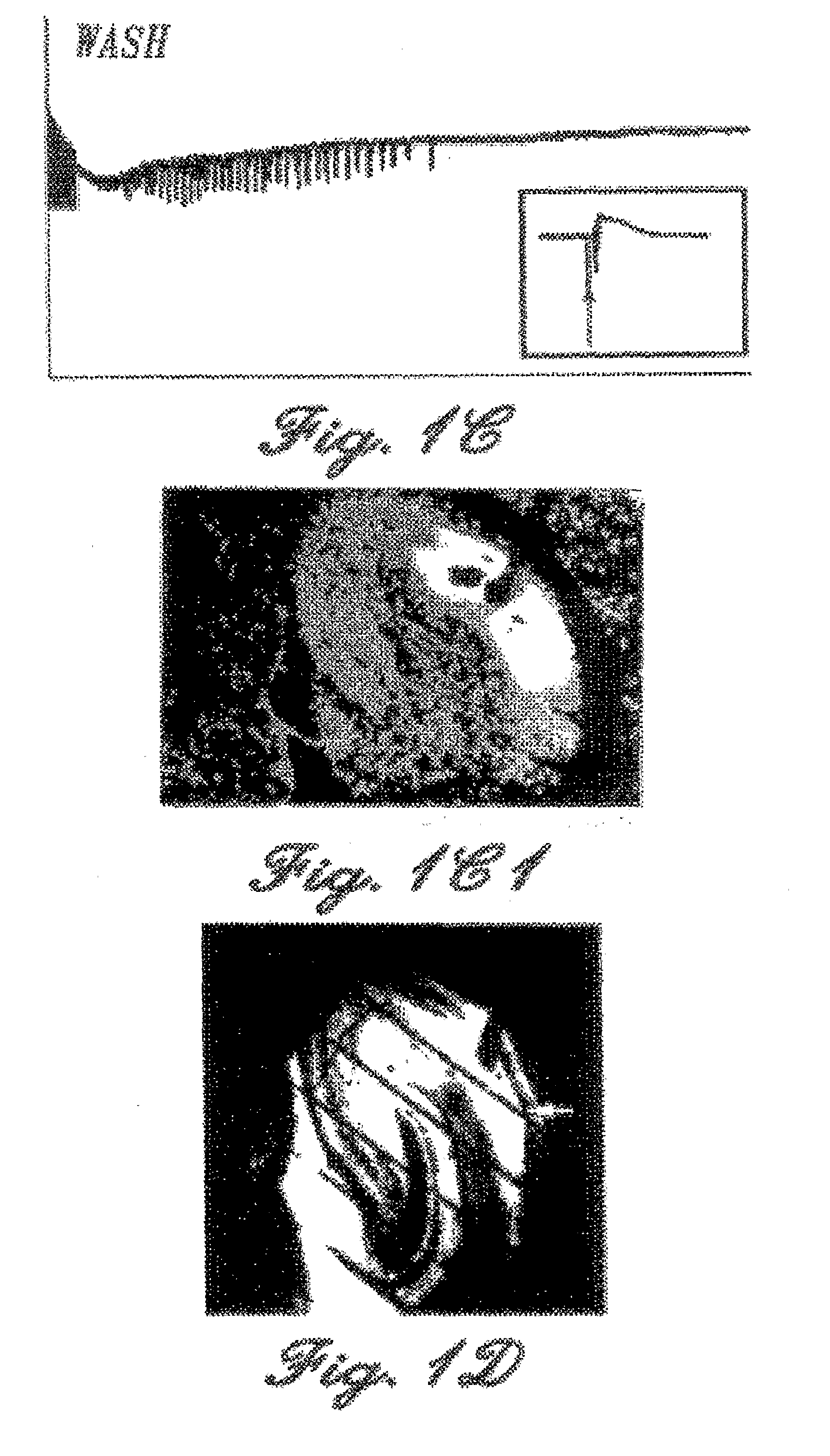Methods and compositions for the treatment of neuropsychiatric and addictive disorders
a neuropsychiatric and addictive disorder technology, applied in the direction of drug compositions, heterocyclic compound active ingredients, biocides, etc., can solve the problems of neuropathic pain that neuropathic pain is difficult to treat, and analgesic drugs that are effective against normal pain (e.g., opioid narcotics and non-steroidal anti-inflammatory drugs) are rarely effective against neuropathic pain, so as to reduce neuronal hyper
- Summary
- Abstract
- Description
- Claims
- Application Information
AI Technical Summary
Benefits of technology
Problems solved by technology
Method used
Image
Examples
example 1
Methyl 3-Aminosulfonyl-5-butylamino-4-phenoxybenzoate (Bumetanide Methyl Ester)
[0198]To a slurry of bumetanide (1.2 g, 3.29 mmol) in methanol (12 mL) under nitrogen, was added a mixture of thionyl chloride (70 uL) in methanol (6 mL) over 5 minutes. After stirring for 5 minutes the reaction mixture became soluble. The reaction stirred for an additional 30 minutes, at which time the reaction was complete by thin layer chromatography (TLC). The methanol was removed under reduced pressure and the residue was brought up in ethyl acetate and washed with saturated sodium bicarbonate, water and brine. The ethyl acetate was dried over anhydrous magnesium sulfate and concentrated to a yield 1.1 g (89%) of methyl 3-aminosulfonyl-5-butylamino-4-phenoxybenzoate as a white solid. Using similar methodology bumetanide ethyl ester, bumetanide isoamyl ester, bumetanide octyl ester and bumetanide benzyl ester, can be prepared.
example 2
3-Aminosulfonyl-5-butylamino-4-phenoxythiobenzoic Acid (Thiobumetanide, Bumetanide —(C═O)—SH Thioacid)
[0199]Bumetanide can be reacted thionyl chloride to make the corresponding acid chloride which can then be reacted with sodium hydrogen sulfide to give 3-aminosulfonyl-5-butylamino-4-phenoxythiobenzoic acid (thiobumetanide, S-bumetanide thioacid) by the methodology of Noble, P. and Tarbell, D. S., Org. Synth., Coll. Vol. IV, John Wiley & Sons, Inc., New York, 1963, 924-927.
example 3
3-Aminosulfonyl-5-butylamino-4-phenoxythiobenzoic Acid (Thiobumetanide, Bumetanide —(C═O)—SH Thioacid)
[0200]Bumetanide methyl ester can be reacted with hydrogen sulfide or sodium hydrogen sulfide to give, following acidification, 3-aminosulfonyl-5-butylamino-4-phenoxythiobenzoic acid (thiobumetanide, bumetanide thioacid).
PUM
| Property | Measurement | Unit |
|---|---|---|
| thick | aaaaa | aaaaa |
| wavelengths | aaaaa | aaaaa |
| rectal temperature | aaaaa | aaaaa |
Abstract
Description
Claims
Application Information
 Login to View More
Login to View More - R&D
- Intellectual Property
- Life Sciences
- Materials
- Tech Scout
- Unparalleled Data Quality
- Higher Quality Content
- 60% Fewer Hallucinations
Browse by: Latest US Patents, China's latest patents, Technical Efficacy Thesaurus, Application Domain, Technology Topic, Popular Technical Reports.
© 2025 PatSnap. All rights reserved.Legal|Privacy policy|Modern Slavery Act Transparency Statement|Sitemap|About US| Contact US: help@patsnap.com



